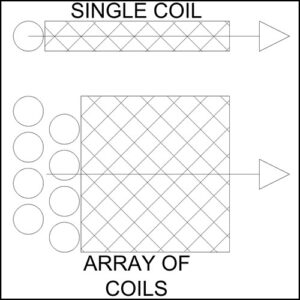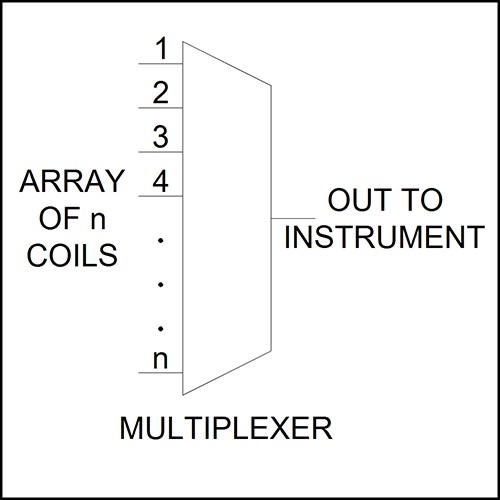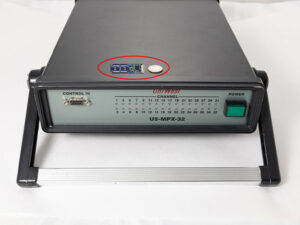Introduction to Eddy Current Arrays
For years, eddy current testing was performed by scanning a single probe over the area of interest. A typical eddy current probe might have a coverage of 0.125 inches to 0.375 inches, depending on the probe. This means that several passes of the probe could be required to achieve the desired coverage.
Eddy current array (ECA) probes, in their fundamental form, are a series of single coils arranged in a row or rows, allowing much larger single-pass coverage than conventional eddy current probes.


Multiplexing is used to enable/disable the array’s coils in a specific sequence. The multiplexed signal is then fed to an eddy current instrument for flaw detection. Some ECA probes include an encoder, which when paired with the appropriate eddy current instrument, allows for C-scan imaging of the scanned area.
Early multiplexers (MUX) had the footprint of a laptop computer and could multiplex 8-32 coils, depending on the manufacturer. This setup can be a bit cumbersome since the array is connected to the multiplexer (which requires its own power), then a cable connecting the multiplexer to the eddy current instrument. Modern computer chips have allowed the multiplexer to shrink to the size of a stick of gum. For example, UniWest now has a 64-channel multiplexer (2.25 inches x 0.65 inches) that can be built directly into their RCAT array probes. This eliminates one cable, two connection points, and the external multiplexer.
In conclusion, eddy current arrays can be an effective way to dramatically speed up inspection times compared to conventional eddy current probes.

Reach Out To Us
Ready for more information or an on-site demonstration?
Click the button below to get started!